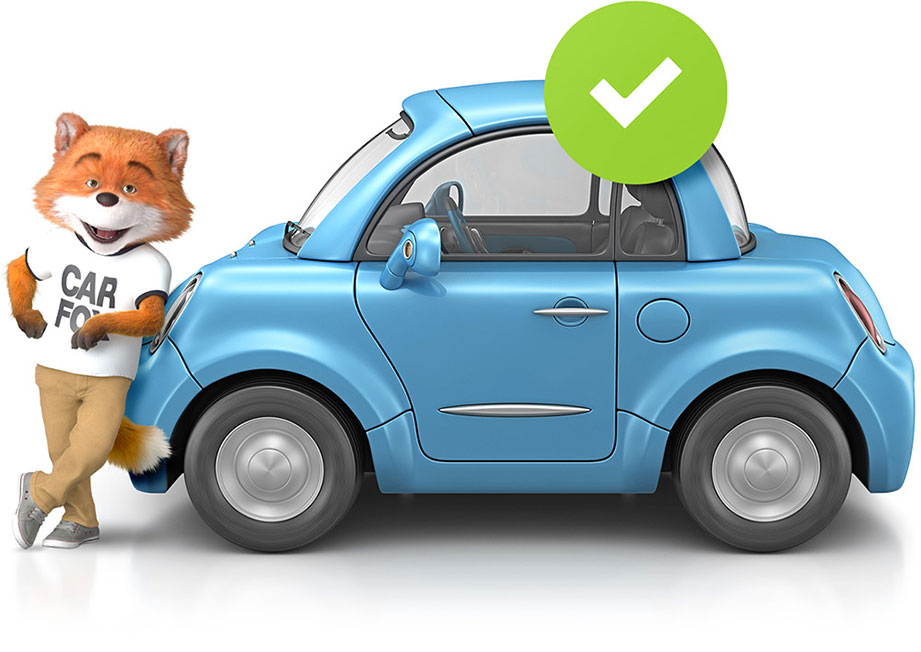Chances are, at some point in your life you’ll encounter a flat tire (see our article on how to change a flat tire) or a dead battery, either with your car or with the vehicle of a friend or family member. The next time you come across a battery that just won’t start, here’s a guide you can follow to safely boost a car using jumper cables.
How to Jump Start a Car
-
By CARFAX Canada
- Time to read: 5 minutes
Steps to jump start a car battery:
1. Pull the booster vehicle so it’s close to car with the dead battery.
You want them close enough so that the jumper cables will reach, but not so close that they touch.
2. Turn off the ignition of both cars.
Be sure both cars are in park (or in neutral if they have a manual transmission), put on the parking brakes and double check that all the car accessories are turned off. Unplug anything that’s hooked up to the cigarette lighter that might be plugged into your car, like a USB charger.
3. Check to make sure the jumper cables you’re using are well insulated and clean.
As you prepare to connect the cables, you may want to consider wearing protective eye equipment as well as safety gloves.
4. Connect the positive end (typically red) of one of the jumper cables to the positive terminal on the dead battery (labeled with a “+” sign).
Generally, the battery’s positive terminal is larger than the negative one and could have a cover on it. Attach the other red clip to the positive terminal of the other car.
5. Attach the negative end of the cable (typically black) to the negative battery terminal.
This is normally marked with a “–“ sign on the booster car.
6. Connect the other end of the negative cable.
Be sure that it’s attached to an unpainted metal surface on the engine of the dead car. This could be an unpainted bolt or bracket that is as far from the dead battery as possible. Doing this provides a solid ground and reduces the possibility of igniting the hydrogen gas emitted by the car battery.
Safety Tip: You want to make sure that the last jumper connection made is the dead battery, not the live battery on the booster car.
7. Visually check that jumper cables are connected securely to the battery.
Also, double check that the cables aren’t dangling near any moving engine parts in either vehicle.
8. Start the booster car and let the booster car idle for several minutes.
The length of idle time depends on how dead the battery is. If it’s an old battery that’s been dead for longer than a month, then the boost process could take a while. If the battery is new and drained due to lights or accessories left on, then the battery won’t need a lot of idling time.
9. Start the dead car and let both vehicles idle.
If the dead vehicle doesn’t start, don’t persist or you could damage the starter. At this point, you might want to consider other factors as to why the vehicle won’t start.
10. Once the dead vehicle has been boosted, remove the jumper cables in the reverse order.
Again, watch that you don’t let the cables fall into the engine or allow the cable ends to touch each other.
- Disconnect the negative cable (typically black) from the engine block or unpainted surface of the car that was jump started – this will break the circuit.
- Then unhook the other end of the negative cable (black) from the negative post (marked with a “–“ sign) of the booster car battery.
- Remove the positive cable (typically red) from the positive terminal (marked with a “+” sign) of the booster car battery.
- The final step is to disconnect the other end of the positive cable (red) from the positive post (marked with a “+” sign) of the formerly dead battery.
11. Drive the car that was just jumped to a safe place before you turn off the engine.
Depending on the condition of the battery (new versus old), it could require another boost to get the juices properly flowing, so keep in mind when you shut it off that there is a chance you’ll have to repeat the boost process to get it back on again.
Car jump safety tips:
- If the battery in the dead car is cracked or leaking, do not try to jump the vehicle as doing so could cause an explosion. If the battery is in this type of condition, it’s likely time for a replacement. If the terminals on either battery are corroded, wipe them clean (while wearing gloves to protect your hands) to ensure that the clamps can make a solid connection.
- If you’re looking to purchase jumper cables, buy ones that are the best quality you can afford. You want cables with well-insulated lamps and at least 8-gauge wire.
- Don’t let the cables touch each other as this can seriously damage the car computer and it’s charging system.
- Take extreme caution when working around a battery as it has the potential to produce explosive gases. Use cables that are free of corrosion and ones that can connect securely to the battery.
- Wear protective equipment and refrain from smoking or lighting a match around the battery.
- If at any point in this process you are unsure, call a professional (like CAA) for help.
Related Articles
Take the guesswork out of buying a used car.

Buyers, avoid costly hidden problems. Sellers, build trust and sell quickly.
